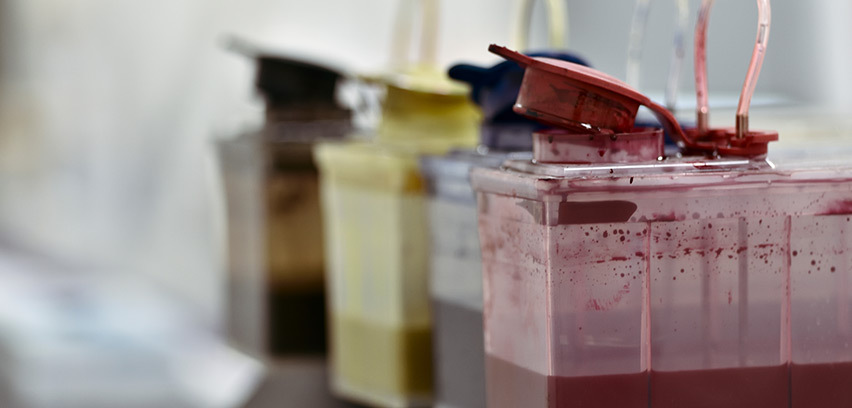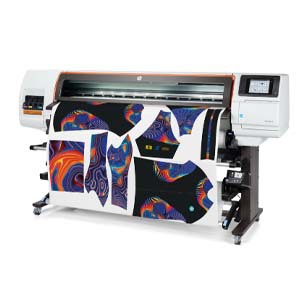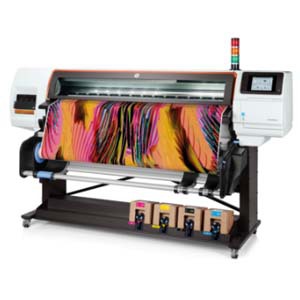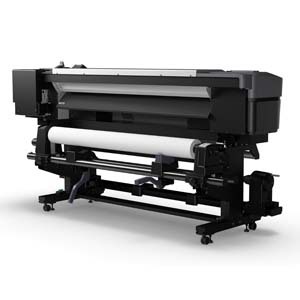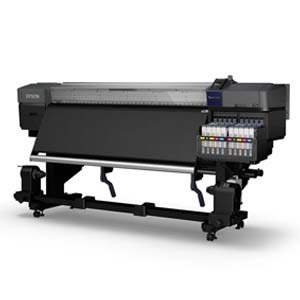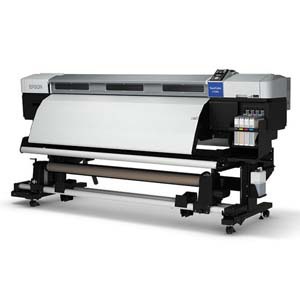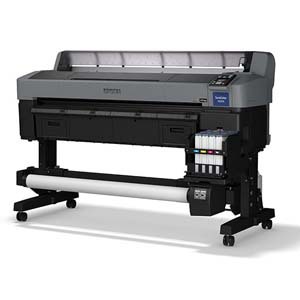If you’re wondering, “What is dye sublimation?” you’re more than likely interested in creating unique promotion items, such as printing on mugs, t-shirts, and more. Dye-sublimation printing allows for vivid, sharp, and vibrant imagery – and stunning products.
It’s also quite affordable if you aren’t planning on printing a large volume of products at a time. In fact, this form of printing is appreciated because it helps keep the budget low when producing a small number of items. Not to mention, dye sublimation creates considerably long-lasting prints, known for being extremely slow to fade.
This article goes beyond those quick answers to address what makes this form of printing special and how it expands what you can do. We comprehensively address this exciting technology via the following questions:
- What is Dye Sublimation?
- What is a Dye Sublimation Printer?
- What is Dye Sublimation Ink?
- What Materials Can Be Used in Dye Sublimation Printing?
- How Does a Dye Sublimation Printer Work?
- What are Different Types of Dye Sublimation Printers?
What is Dye Sublimation Printing?
Dye sublimation is a printing process using a specially designed ribbon that holds solid inks. The printer heats the ink, causing it to sublimate – which means it skips the liquid form and transitions directly into a gaseous state. (Another example of the use of sublimation within the industry is freeze-drying.)
Three primary colors are applied to the page or other material. Once the ink hits the media, it transitions from a gas back to solid, and a full-color image results. So that the ink does not smudge, the printer finishes by introducing a clear protective coating to the paper/substrate.
What is a Dye Sublimation Printer?
One way to understand a dye sublimation printer is to compare it to traditional inkjet printing. Here are three ways in which a dye sublimation machine differs from a standard inkjet printer’s process and capabilities:
- Operation — The ribbon-heating gas generation process of a dye sublimation printer is described above. In contrast, an inkjet printer controls where ink droplets spray onto media from its cartridge’s nozzles. The cartridge is moved from side to side, producing a spectrum of color through the placement of these microscopic droplets.
- Efficiency — The efficiency of a dye sublimation printer is not as impressive as that of an inkjet printer. Within the former, the trio of primary color panels does not completely transfer onto the page — with the ink that remains on the panels will go to waste. The inkjet printer, on the other hand, will only use the required ink for a job.
- Image Quality — Here, dye sublimation excels. Essentially, dye sublimation is similar to film, while inkjet printing is similar to video. The former creates an image similar to traditional photography, with a continually blended color range. A traditional inkjet printer is less seamless: you can see the primary color dots if the image is magnified. It is like an extremely detailed computer image.
What is Dye Sublimation Ink?
Dye sublimation ink is utilized, along with intense pressure and heat, to print onto novelty items such as coasters, t-shirts, plaques, and mugs. This form of ink has a few key benefits:
- It is longer-lasting than traditional inks. You will not see the image wash off or peel off of the printed item.
- Dye sublimation ink is water-proof.
- The high heat and coating make smudging nearly impossible.
- The accuracy is incredibly strong (given the specificity the vaporization allows over standard inkjet droplets).
What Materials Can Be Used in Dye Sublimation Printing?
These printers are not intended for typical workplace media such as printer paper, labels, or envelopes. Rather, they are popular for printing onto coffee mugs, t-shirts, and other novelty goods.
Substrates must be made of rubber, synthetic fabric, or plastic. This technology does not function correctly with cotton or other natural fabrics. Rather than bonding with natural fibers as it does with synthetic ones, gaseous ink passes straight through natural textiles.
Mouse pads, floor mats, coasters, flip-flops, event wristbands, bathing suits, shower curtains, and athletic apparel are examples of media containing the necessary materials suited to dye sublimation printing. Beyond these broad promotional uses, the machines can be used to create photo prints or postcards via specially coated media, such as cards or paper.
Dye Sublimation Printer Process: How Does it Work?
Again, what is dye sublimation? While the above information allows a better understanding of the basics, let’s get a bit deeper with the notion of transfer paper. Transfer paper is commonly used with these printers, although direct-to-fabric printing is also possible. If you use transfer printing, the process is a bit more complex.
When you use a dye-sublimation printer to create projects via transfer:
- The transfer paper will be outfitted with solidified ink.
- A heat press is applied to the paper.
- Sublimation occurs: the solid ink becomes a gas.
- An incredible image starts to arise as the fibers of plastic material or synthetic fabric become permeated with the gas.
It again helps to contrast a standard inkjet printer to a dye-sublimation printer (see above section). In the former, liquid ink within cartridges becomes solid via heat and air as it dries on the paper’s surface. The two-step dye sublimation printer process involves liquid ink being introduced to media, where it dries and becomes solid, followed by vaporization (sublimation, in this case) of the solid ink.
Example dye sublimation printing: cycling jerseys
Sublimated dye is often used to print onto cycling jerseys and similar athletic clothing. (As indicated above, this printer only works with synthetic substrates – so avoid cotton.)
Dye Sublimation Printing Process for Sportswear
What is dye sublimation printing for sportswear? Assuming you are using transfer printing, it is a four-step process:
Step #1. Create all the graphics.
You need to design graphics for each section of the jersey – the front and back, as well as the arms and cuffs. Combine the graphics into a master layout. The paper is printed from the master layout file.
Step #2. Print the dye sublimation ink onto the transfer paper.
You print the sublimation ink to a ream of transfer paper. The ink will rapidly form a solid.
Step #3. Utilize the roller for sublimation.
The transfer paper is positioned facing a bolt of synthetic fabric. The two items are directed into a sublimation roller.
Extreme heat (350-420 °F) and pressure are utilized within the roller to sublimate the ink. The ink that is on the transfer paper grows hot so fast that it skips the melting process and immediately evaporates. The vapor can also get deeper into the jersey because of the pores of the textile open in response to the heat.
The jersey’s pores shut once the heat is no longer present, capturing the sublimated ink. Within the jersey, the ink shifts back into a solid form. A permanent, full-color image has now been introduced to the fabric.
Step #4. Sew together the pieces.
At this point, you can throw out the transfer paper. Based on the parameters of your graphics, you should now have a bolt of fabric that includes all the components. Cut out each piece from the bolt and construct your finished jersey by sewing them together.
Types of Dye Sublimation Printers
You have options when it comes to purchasing a dye-sublimation printer. Some of the most robust and versatile models are the following, with highlighted notable characteristics:
- Save up to 30% of floor space with front media loading.
- Print direct-to-fabric or onto transfer paper using one machine.
- It is the first dye-sublimation printer that offers front media loading for a 50% reduction in floor space.
- As the environment changes, the built-in spectrophotometer ensures continuing color accuracy.
Epson SureColor F9470 Dye-Sublimation Inkjet Printer
- Airflow surrounding the print head is managed with air-guard controls.
- You can keep production moving even if a print head malfunctions with a dual print head design.
Epson SureColor F9470H Dye-Sublimation Inkjet Printer
- Ongoing production is facilitated by a fabric head wiper and automatic, cutting-edge paper-tension control.
- Great contrast and color saturation are enabled by pink and yellow fluorescent inks (the core difference of this upgraded version).
Epson SureColor F7200 Dye Sublimation Printer
- Accelerate ink drying time with the built-in After Heater.
- The production speeds of this machine are industrial-level, so you can achieve full capacity with fewer printers.
Epson SureColor F6370 44” Dye Sublimation Printer
Standard Edition | Production Edition
- From the front, access all printer functions thanks to the compact design.
- Upgrade to the Production Edition to allow roll-to-roll calendar production via the machine’s take-up system.
What is Dye Sublimation Going to Do for You?
Want to learn more about how dye sublimation can help your business? Contact DTG today to schedule a hands-on experience at our exclusive Epson Certified Solutions Center.
